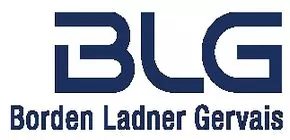In a recent case before the Federal Court in Vancouver, British Columbia, the California company Kamsut, Inc. (Kamsut) sought to expunge the trade-mark KAMA SUTRA owned by Jaymei Enterprises Inc. Jaymei registered the trade-mark in Canada in 2003 in association with chocolates, candies and other similar products (the "Jaymei Mark").
Kamsut is a manufacturer and distributor of romantic giftware, as well as edible chocolate flavoured products including body paint and body oil. It owns the Canadian trade-mark registration KAMA SUTRA. Kamsut registered the trade-mark in 1983 in association with cosmetics, namely, face and body creams, bath salts and oils, cleansing lotions and creams, body powder perfumery, toiletries, emulsions, namely, lipstick; nail polish, lotions and body oils, shampoos, bath and beauty soap, beauty aids, namely face and eye make-up, mascara, rouge (the "Kamsut Mark"). In the present application, Kamsut claimed that it had used the Kamsut mark in association with chocolate flavoured products in Canada since 1988.
Jaymei is a British Columbia company based in North Vancouver. In 2003 it obtained registration of the mark KAMA SUTRA in association with chocolates, candies, chocolate truffles, candied fruits, cookies, waffles, coffee and packaged hot chocolate (the "Jaymei Mark"). In its application for registration, Jaymei claimed use of the Jaymei mark since 1994. The only wares of Jaymei in dispute in this proceeding are chocolates and chocolate truffles. In 2004, Jaymei made an application to extend the wares and services associated with the Jaymei Mark to include giftware and home accessories. That application was opposed by Kamsut and is currently pending a decision of the Trade-mark Opposition Board.
Kamsut claimed in its application to the Court that Jaymei was not entitled to the Jaymei Mark pursuant to Section 16(1) of the Trade-marks Act, on the basis that on the date of first use of the Jaymei Mark it was confusing with the Kamsut Mark. Kamsut also claimed that at the date of the commencement of the current application the Jaymei Mark was not distinctive as per Section 18(1) of the Trade-marks Act.
On the issue of Section 16(1) of the Trade-marks Act, the Court considered whether the Jaymei Mark was registerable on the basis that it was not confusing with a mark that had been previously used or made known in Canada. The Court first examined the evidence filed by way of affidavit by Kamsut. There is a presumption in law that the Jaymei Mark, because it is registered, is valid and the burden to prove otherwise is born by Kamsut. In this case, the Court found that Kamsut had not presented sufficient evidence of its use of the Kamsut Mark in Canada in 1988 with chocolate flavoured products as it had claimed. The Court relied on a number of cases to make the finding that Kamsut had an obligation to "establish or prove such sales (of the product) by detailed and specific evidence of use meeting the requirement of Section 4 of the Trade-marks Act".1 The Court found that not only was there no evidence the Kamsut Mark had been used in Canada prior to the date of first use of the Jaymei Mark, J.Lemieux also found that the mark had also not been made known in Canada at the relevant time.
Citing Auld Phillips2 J.Lemieux determined that it was not necessary to address the issue of confusion if the first part of the test in Section 16(1) of the Trade-marks Act, that the mark in question had been used or made known in Canada at the relevant time, had not been established. The Court nevertheless underwent an analysis of whether the marks are confusing. The Court concluded that while the marks resemble each other in appearance, sound and the ideas suggested by them, they are not used with the same types of wares or in the same area of trade. J.Lemieux concluded that the Kamsut products are sexual aides and while flavoured with chocolate are not eaten and are therefore not the same wares as chocolates or chocolate truffles.
In addition, the Court drew a negative inference from the lack of evidence of confusion.
On the issue of distinctiveness and Section 18(1) the Court stated:
It is well established in trade-mark law that in order to be distinctive it is not necessary for the mark to distinguish the wares throughout Canada. The mark will remain distinctive so long as people within a particular area of Canada recognize the mark as representing the owner of the wares.3
Applying this reasoning, J.Lemieux concluded from the evidence that the Jaymei Mark was distinctive on the basis that it had acquired local distinctiveness in the Vancouver area. The judge also concluded that whether the wares in question are similar is a relevant factor in assessing negation of distinctiveness and that the wares of Kamsut and Jaymei were not similar in this case. Therefore the distinctiveness of the Jaymei Mark was not negated. The Court found in favour of Jaymei and dismissed the application to expunge the Jaymei Mark. This case provides an excellent, clearly written summary of the case law on confusion and distinctiveness.
In addition to the analysis of the law on confusion and distinctiveness, J.Lemieux's explanation of the evidence and why it was insufficient to prove use is very instructive to counsel when preparing affidavits in both court and Trade-mark Opposition Board actions and to trade-mark owners in terms of their retention of business records. J.Lemieux reviews in detail certain elements of the evidence of Kamsut and why they were not sufficient to support its claims of prior use. In particular, the Court highlights the lack of dates noted on packaging and labels submitted as evidence and notes that the labels appear to be the ones currently in use and are not those in use as of the claimed first date of use. The Court also comments on the lack of dating on advertising and the insufficient evidence of sales of the wares, that no evidence of sale figures were provided, and no invoices. The Court also notes the lack of evidence filed to support claims in the affidavit that Kamsut's products were distributed by another party. One of the affiants claimed to be the president of the distributor of the Kamsut products, but no evidence was filed to indicate what the relationship was between the distributor and Kamsut, or whether they made any sales. In addition, Kamsut indicated to the Court that they retained business records for only seven years, attempting to justify its lack of evidence to support certain claims, but provided no reason for such policy.
This analysis and specific references to deficiencies provides a good cautionary list for counsel preparing affidavits, namely, do not make a claim in an affidavit that you can not substantiate with dated, specific evidence. The Court's comments also provide some guidance for trade-marks owners, specifically: retain records of the use of owned trade-marks in perpetuity and ensure that such specimens are dated and remember that marketing information is insufficient to establish the use of a trade-mark in association with wares. As such, dated labels, packaging and proof of actual sales must be retained and submitted into evidence to establish use on a specified date.
There are two actions still ongoing between the two parties. Jaymei is currently opposing the registration by Kamsut of the extension of its wares and services associated with the Kamsut Mark. This action is at the early stages of the opposition process. As previously mentioned, Kamsut is in the last stages of opposing the application for the extension of the wares for the Jaymei Mark. In this action, the parties have filed their written arguments. It appears clear that these two parties have not yet resolved their differences.
Footnotes
1. Redsand Inc. v. Dylex Ltd. [1997] F.C.J. No, 792 (F.C.T.D), J.C. Penney Co. v. Gaberdine Clothing Co., 2001 FCT 1333, Auld Phillips v. Suzanne's Inc. [2005] F.C.J. No. 70
2. Supra.
3. Kamsut Inc. v. Jaymei Enterprises Inc. [2009] F.C.J. No. 803 p.26
Editor-in-Chief, Kathleen Lemieux, Partner
Editor, Hafeez Rupani, Associate
The content of this article is intended to provide a general guide to the subject matter. Specialist advice should be sought about your specific circumstances.


